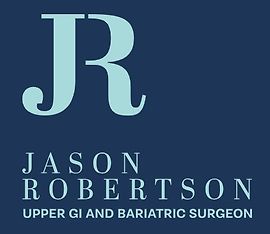Central Auckland, East Auckland, North Auckland, South Auckland, West Auckland > Private Hospitals & Specialists >
Jason Robertson - Upper GI, Bariatric & General Surgeon
Private Service, General Surgery, Bariatric (Weight Loss) Surgery
Description
Jason Robertson is a New Zealand trained general surgeon specialising in Upper Gastrointestinal, Bariatric and Laparoscopic surgery. Jason is a consultant surgeon at North Shore Hospital as well as in private practice.
After completing advanced training in general surgery, Jason continued his subspecialist training as an accredited fellow of the formal AANZGOSA (Australia & Aotearoa New Zealand Gastric and Oesophageal Surgery Association) post-fellowship program, undergoing a further three years of high-volume upper gastrointestinal and bariatric subspecialisation in Australia and New Zealand.
During this time Jason gained expertise in all aspects of upper gastrointestinal surgery including advanced minimally-invasive gastro-oesophageal cancer surgery, complex primary and revisional anti-reflux surgery, and the surgical management of obesity including revisional bariatric surgery.
Jason is one of the few bariatric surgeons in Australasia able to offer the complete range of internationally recognised bariatric operations.
Consultants
-

Mr Jason Robertson
Upper GI, Bariatric, Laparoscopic & General Surgeon
How do I access this service?
Referral
Referral Expectations
Fees and Charges Description
Jason is a Southern Cross Affiliated Provider and NIB preferred provider
Procedures / Treatments
Conditions of the gut dealt with by general surgery include disorders of the oesophagus, stomach, small bowel, large bowel and anus. These range from complex conditions such as ulceration or cancer in the bowel through to fairly minor conditions such as haemorrhoids. Many of the more major conditions such as bowel cancer will require surgery, or sometimes treatment with medication, chemotherapy or radiotherapy. Haemorrhoids are a condition where the veins under the lining of the anus are congested and enlarged. Less severe haemorrhoids can be managed with simple treatments such as injection or banding which can be performed in the clinic while larger ones will require surgery.
Conditions of the gut dealt with by general surgery include disorders of the oesophagus, stomach, small bowel, large bowel and anus. These range from complex conditions such as ulceration or cancer in the bowel through to fairly minor conditions such as haemorrhoids. Many of the more major conditions such as bowel cancer will require surgery, or sometimes treatment with medication, chemotherapy or radiotherapy. Haemorrhoids are a condition where the veins under the lining of the anus are congested and enlarged. Less severe haemorrhoids can be managed with simple treatments such as injection or banding which can be performed in the clinic while larger ones will require surgery.
Conditions of the gut dealt with by general surgery include disorders of the oesophagus, stomach, small bowel, large bowel and anus. These range from complex conditions such as ulceration or cancer in the bowel through to fairly minor conditions such as haemorrhoids. Many of the more major conditions such as bowel cancer will require surgery, or sometimes treatment with medication, chemotherapy or radiotherapy.
Haemorrhoids are a condition where the veins under the lining of the anus are congested and enlarged. Less severe haemorrhoids can be managed with simple treatments such as injection or banding which can be performed in the clinic while larger ones will require surgery.
Gastro-oesophageal Reflux Disease (GORD) occurs when the valve between the stomach and the lower end of the oesophagus is not working properly. Laparoscopic Nissen Fundoplication is a surgical procedure for GORD that involves wrapping the top part of the stomach (fundus) around the lower end of the oesophagus. The valve between the stomach and the oesophagus is also replaced or repaired.
Gastro-oesophageal Reflux Disease (GORD) occurs when the valve between the stomach and the lower end of the oesophagus is not working properly. Laparoscopic Nissen Fundoplication is a surgical procedure for GORD that involves wrapping the top part of the stomach (fundus) around the lower end of the oesophagus. The valve between the stomach and the oesophagus is also replaced or repaired.
Gastro-oesophageal Reflux Disease (GORD) occurs when the valve between the stomach and the lower end of the oesophagus is not working properly.
Laparoscopic Nissen Fundoplication is a surgical procedure for GORD that involves wrapping the top part of the stomach (fundus) around the lower end of the oesophagus. The valve between the stomach and the oesophagus is also replaced or repaired.
Bariatric or weight loss surgery refers to a number of different procedures that can be performed to treat obesity. Procedures fall into three main types: Malabsorptive - these procedures involve bypassing a section of the small intestine thus reducing the amount of food absorbed into the body. Laparoscopic Gastric Bypass involves bypassing a section of the intestine so that less food is absorbed. Restrictive - these procedures involve reducing the size of the stomach, usually by creating a small pouch at the top of the stomach which limits the amount of food that can be eaten. Laparoscopic Gastric Banding is a surgical treatment for obesity that involves placing an inflatable cuff around the upper stomach. The cuff can be further inflated or deflated to adjust the volume of food that can be consumed. Malabsorptive/Restrictive Combination - these procedures combine both techniques e.g. gastric bypass surgery in which a small stomach pouch is formed and its outlet connected to part of the small intestine.
Bariatric or weight loss surgery refers to a number of different procedures that can be performed to treat obesity. Procedures fall into three main types: Malabsorptive - these procedures involve bypassing a section of the small intestine thus reducing the amount of food absorbed into the body. Laparoscopic Gastric Bypass involves bypassing a section of the intestine so that less food is absorbed. Restrictive - these procedures involve reducing the size of the stomach, usually by creating a small pouch at the top of the stomach which limits the amount of food that can be eaten. Laparoscopic Gastric Banding is a surgical treatment for obesity that involves placing an inflatable cuff around the upper stomach. The cuff can be further inflated or deflated to adjust the volume of food that can be consumed. Malabsorptive/Restrictive Combination - these procedures combine both techniques e.g. gastric bypass surgery in which a small stomach pouch is formed and its outlet connected to part of the small intestine.
Bariatric or weight loss surgery refers to a number of different procedures that can be performed to treat obesity. Procedures fall into three main types:
-
Malabsorptive - these procedures involve bypassing a section of the small intestine thus reducing the amount of food absorbed into the body.
-
Laparoscopic Gastric Bypass involves bypassing a section of the intestine so that less food is absorbed.
-
Restrictive - these procedures involve reducing the size of the stomach, usually by creating a small pouch at the top of the stomach which limits the amount of food that can be eaten.
Laparoscopic Gastric Banding is a surgical treatment for obesity that involves placing an inflatable cuff around the upper stomach. The cuff can be further inflated or deflated to adjust the volume of food that can be consumed.
Malabsorptive/Restrictive Combination - these procedures combine both techniques e.g. gastric bypass surgery in which a small stomach pouch is formed and its outlet connected to part of the small intestine.
General surgery covers some disorders of the liver and biliary system. The most common of these is pain caused by gallstones. These are formed if the gallbladder is not working properly, and the standard treatment is to remove the gallbladder (cholecystectomy). This procedure is usually performed using a laparoscopic (keyhole) approach.
General surgery covers some disorders of the liver and biliary system. The most common of these is pain caused by gallstones. These are formed if the gallbladder is not working properly, and the standard treatment is to remove the gallbladder (cholecystectomy). This procedure is usually performed using a laparoscopic (keyhole) approach.
General surgery covers some disorders of the liver and biliary system. The most common of these is pain caused by gallstones. These are formed if the gallbladder is not working properly, and the standard treatment is to remove the gallbladder (cholecystectomy). This procedure is usually performed using a laparoscopic (keyhole) approach.
Partial: the diseased part of the stomach is removed and the remaining section is reattached to the oesophagus (food pipe) or small intestine. Total: all of the stomach is removed and the oesophagus is attached directly to the small intestine.
Partial: the diseased part of the stomach is removed and the remaining section is reattached to the oesophagus (food pipe) or small intestine. Total: all of the stomach is removed and the oesophagus is attached directly to the small intestine.
Partial: the diseased part of the stomach is removed and the remaining section is reattached to the oesophagus (food pipe) or small intestine.
Total: all of the stomach is removed and the oesophagus is attached directly to the small intestine.
A hernia exists where part of the abdominal wall is weakened, and the contents of the abdomen push through to the outside. This is most commonly seen in the groin area but can occur in other places. Surgical treatment is usually quite straightforward and involves returning the abdominal contents to the inside and then reinforcing the abdominal wall in some way. Hiatus Hernia: Laparoscopic: several small incisions (cuts) are made in the abdomen (stomach) and a narrow tube with a tiny camera attached (laparoscope) is inserted. Small instruments are inserted through the other cuts, allowing the surgeon to push the hernia (part of the stomach and lower oesophagus that is bulging into the chest) back into position in the abdominal cavity. The hiatus (opening) in the diaphragm (a sheet of muscle between the chest and stomach) is tightened and the stomach is stitched into place. Open: an abdominal incision is made over the hernia and the hernia is pushed back into position in the abdominal cavity. The hiatus (opening in the diaphragm) is tightened and the stomach is stitched into place. Fundoplication: during the above procedures, the top part of the stomach (fundus) may be secured in position by wrapping it around the oesophagus. Inguinal Hernia: Laparoscopic: several small incisions are made in the abdomen and a narrow tube with a tiny camera attached (laparoscope) is inserted. Small instruments are inserted through the other cuts, allowing the surgeon to push the hernia (part of the intestine that is bulging through the abdominal wall) back into its original position. The weakness in the abdominal wall is repaired. Open: an abdominal incision is made and the hernia is pushed back into position. The weakness in the abdominal wall is repaired. Umbilical Hernia: An incision is made underneath the navel (tummy button) and the hernia (part of the intestine that is bulging through the abdominal wall) is pushed back into the abdominal cavity. The weakness in the abdominal wall is repaired. Incisional Hernia: Laparoscopic: several small incisions are made in the abdomen and a narrow tube with a tiny camera attached (laparoscope) is inserted. Small instruments are inserted through the other cuts, allowing the surgeon to push the hernia (part of the intestine that is bulging through the abdominal wall) back into its original position. Open: an abdominal incision is made and the hernia is pushed back into position.
A hernia exists where part of the abdominal wall is weakened, and the contents of the abdomen push through to the outside. This is most commonly seen in the groin area but can occur in other places. Surgical treatment is usually quite straightforward and involves returning the abdominal contents to the inside and then reinforcing the abdominal wall in some way. Hiatus Hernia: Laparoscopic: several small incisions (cuts) are made in the abdomen (stomach) and a narrow tube with a tiny camera attached (laparoscope) is inserted. Small instruments are inserted through the other cuts, allowing the surgeon to push the hernia (part of the stomach and lower oesophagus that is bulging into the chest) back into position in the abdominal cavity. The hiatus (opening) in the diaphragm (a sheet of muscle between the chest and stomach) is tightened and the stomach is stitched into place. Open: an abdominal incision is made over the hernia and the hernia is pushed back into position in the abdominal cavity. The hiatus (opening in the diaphragm) is tightened and the stomach is stitched into place. Fundoplication: during the above procedures, the top part of the stomach (fundus) may be secured in position by wrapping it around the oesophagus. Inguinal Hernia: Laparoscopic: several small incisions are made in the abdomen and a narrow tube with a tiny camera attached (laparoscope) is inserted. Small instruments are inserted through the other cuts, allowing the surgeon to push the hernia (part of the intestine that is bulging through the abdominal wall) back into its original position. The weakness in the abdominal wall is repaired. Open: an abdominal incision is made and the hernia is pushed back into position. The weakness in the abdominal wall is repaired. Umbilical Hernia: An incision is made underneath the navel (tummy button) and the hernia (part of the intestine that is bulging through the abdominal wall) is pushed back into the abdominal cavity. The weakness in the abdominal wall is repaired. Incisional Hernia: Laparoscopic: several small incisions are made in the abdomen and a narrow tube with a tiny camera attached (laparoscope) is inserted. Small instruments are inserted through the other cuts, allowing the surgeon to push the hernia (part of the intestine that is bulging through the abdominal wall) back into its original position. Open: an abdominal incision is made and the hernia is pushed back into position.
A hernia exists where part of the abdominal wall is weakened, and the contents of the abdomen push through to the outside. This is most commonly seen in the groin area but can occur in other places. Surgical treatment is usually quite straightforward and involves returning the abdominal contents to the inside and then reinforcing the abdominal wall in some way.
Hiatus Hernia:
Laparoscopic: several small incisions (cuts) are made in the abdomen (stomach) and a narrow tube with a tiny camera attached (laparoscope) is inserted. Small instruments are inserted through the other cuts, allowing the surgeon to push the hernia (part of the stomach and lower oesophagus that is bulging into the chest) back into position in the abdominal cavity. The hiatus (opening) in the diaphragm (a sheet of muscle between the chest and stomach) is tightened and the stomach is stitched into place.
Open: an abdominal incision is made over the hernia and the hernia is pushed back into position in the abdominal cavity. The hiatus (opening in the diaphragm) is tightened and the stomach is stitched into place.
Fundoplication: during the above procedures, the top part of the stomach (fundus) may be secured in position by wrapping it around the oesophagus.
Inguinal Hernia:
Laparoscopic: several small incisions are made in the abdomen and a narrow tube with a tiny camera attached (laparoscope) is inserted. Small instruments are inserted through the other cuts, allowing the surgeon to push the hernia (part of the intestine that is bulging through the abdominal wall) back into its original position. The weakness in the abdominal wall is repaired.
Open: an abdominal incision is made and the hernia is pushed back into position. The weakness in the abdominal wall is repaired.
Umbilical Hernia:
An incision is made underneath the navel (tummy button) and the hernia (part of the intestine that is bulging through the abdominal wall) is pushed back into the abdominal cavity. The weakness in the abdominal wall is repaired.
Incisional Hernia:
Laparoscopic: several small incisions are made in the abdomen and a narrow tube with a tiny camera attached (laparoscope) is inserted. Small instruments are inserted through the other cuts, allowing the surgeon to push the hernia (part of the intestine that is bulging through the abdominal wall) back into its original position.
Open: an abdominal incision is made and the hernia is pushed back into position.
A long, flexible tube with a tiny camera attached (gastroscope) is inserted through your mouth and moved down your digestive tract. This allows the surgeon a view of the upper part of your digestive tract i.e. oesophagus (food pipe), stomach and duodenum (top section of the small intestine). Sometimes a biopsy (small tissue sample) will need to be taken during the procedure for later examination at a laboratory.
A long, flexible tube with a tiny camera attached (gastroscope) is inserted through your mouth and moved down your digestive tract. This allows the surgeon a view of the upper part of your digestive tract i.e. oesophagus (food pipe), stomach and duodenum (top section of the small intestine). Sometimes a biopsy (small tissue sample) will need to be taken during the procedure for later examination at a laboratory.
A long, flexible tube with a tiny camera attached (gastroscope) is inserted through your mouth and moved down your digestive tract. This allows the surgeon a view of the upper part of your digestive tract i.e. oesophagus (food pipe), stomach and duodenum (top section of the small intestine). Sometimes a biopsy (small tissue sample) will need to be taken during the procedure for later examination at a laboratory.
Disability Assistance
Wheelchair access
Online Booking URL
Public Transport
The Auckland Transport website is a good resource to plan your public transport options.
Parking
Free patient parking is available at the practice.
Pharmacy
Find your nearest pharmacy here
Website
Contact Details
The Specialists Takapuna, 3 Anzac Street, Takapuna
North Auckland
-
Phone
(09) 869 3080
Healthlink EDI
tstanzac
Email
Website
124 Hobsonville Road, Hobsonville, Auckland
West Auckland
-
Phone
(09) 869 3080
Healthlink EDI
tstanzac
Email
Website
53 Lincoln Road, Henderson, Auckland
West Auckland
-
Phone
(09) 869 3080
Healthlink EDI
tstanzac
Email
Website
Was this page helpful?
This page was last updated at 11:13AM on January 14, 2025. This information is reviewed and edited by Jason Robertson - Upper GI, Bariatric & General Surgeon.

